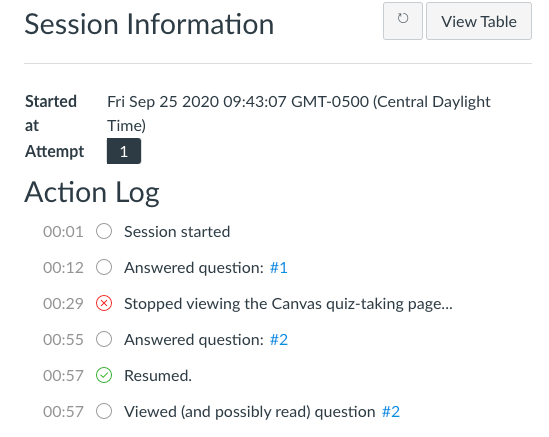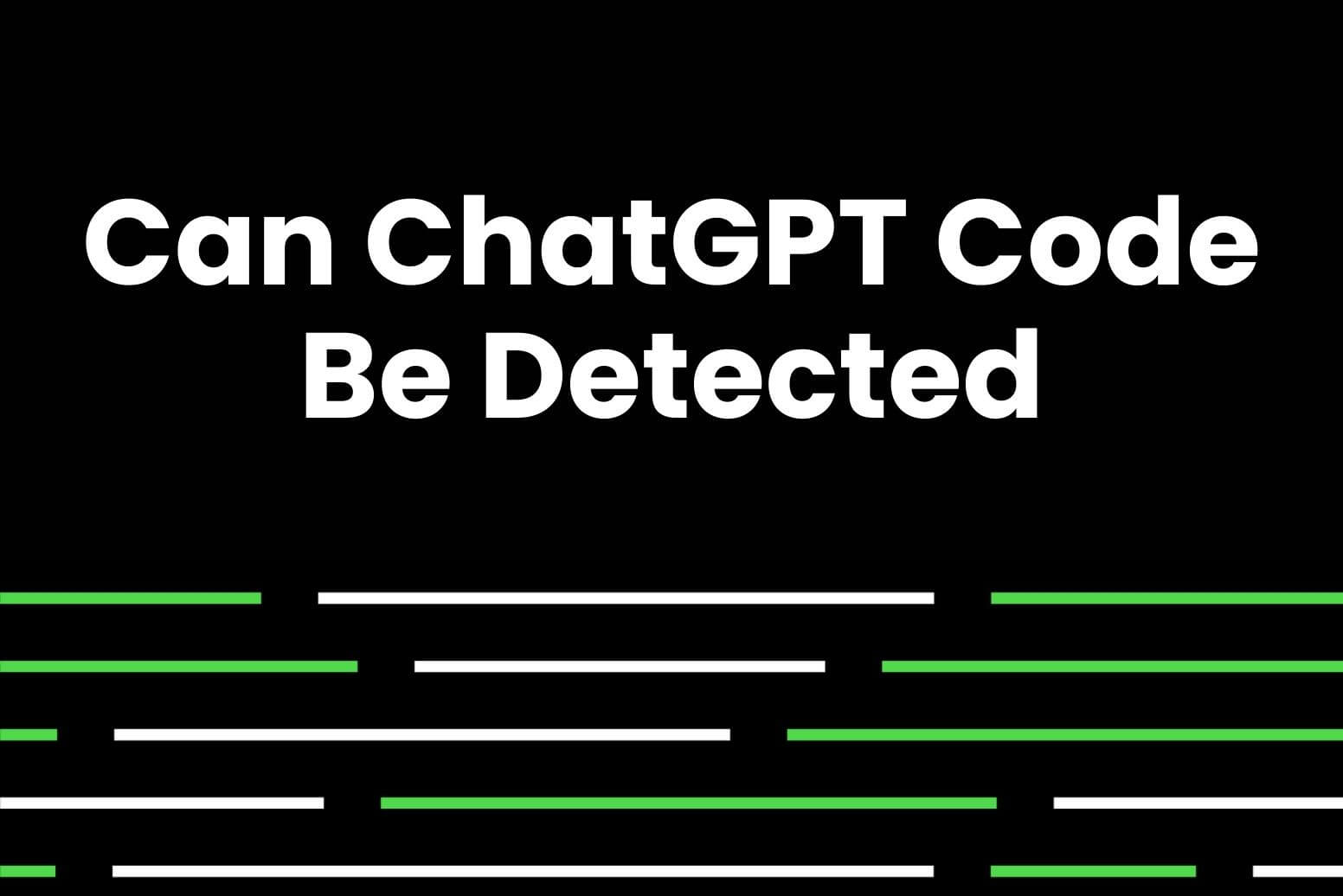Canvas cannot detect specific ChatGPT content directly. However, it can analyze patterns in the text to identify potential issues or violations of guidelines.
Can Canvas Detect ChatGPT?
Canvas doesn’t have a direct way to spot content created by ChatGPT in student work. While Canvas might notice some irregularities during tests that could raise a flag for suspicious activity, it doesn’t have specific tools to track or detect ChatGPT use in real-time.
External tools like Turnitin and ContentDetector.Al can help identify Al-generated content, which is often used for cheating in academic settings.
Now that ChatGPT is growing in popularity, educators all over the world are wondering whether Canvas can keep up. Can Canvas Detect ChatGPT Content? In this blog post, we’ll explore the capabilities and limitations of Canvas when it comes to detecting and managing content generated by ChatGPT.
Can Canvas Detect ChatGPT Extension?
In a way, yes. Canvas can detect if ChatGPT is involved from user activity and AI-generated content analysis.

Canvas’s Strides in AI-Generated Content Detection
Canvas, a leading learning management system, has taken substantial steps in recognizing AI-generated content, including essays and discussions crafted with cutting-edge ChatGPT technology. Although Canvas doesn’t pinpoint ChatGPT usage directly, it boasts capabilities that can raise alerts for potential irregularities.
For a more robust approach, universities often deploy advanced tools like ContentDetector.AI or Turnitin to effectively detect the utilization of ChatGPT and maintain academic integrity.
As academic institutions grapple with these challenges, the quest for equilibrium between fostering fairness, transparency, and the preservation of academic standards emerges as a pivotal consideration for the road ahead.
How Could Canvas Detect ChatGPT or Other AI Tools?
Canvas uses various strategies to detect the use of AI tools like ChatGPT in exams and tasks. This detection process incorporates a blend of advanced techniques designed to uncover any possible cheating attempts.

Integrate With AI Detection Tools Like Plagiarism Checker
A standout feature of the Canvas learning system lies in its seamless integration with various productivity tools. This functionality enables users to link plagiarism checkers like Turnitin, ContentDetecter.AI, and others directly to the system. These tools meticulously scan and analyze students’ work, identifying potential instances of plagiarism.
Notably, some of these plagiarism checkers possess the capability to detect AI-generated content as well. This means tutors and educational institutions can depend on these tools to effectively identify and address assignments created by AI within the Canvas learning system.
Integrates with Turnitin to detect AI assistant
Armed with advanced algorithms and an extensive database, Turnitin excels in identifying various forms of plagiarism within students’ work. It is in a constant state of improvement, incorporating machine learning and natural language processing to pinpoint assignments that may have received AI assistance.
Integrates with ContentDetector.AI
Employing sophisticated algorithms, this platform meticulously examines text, identifying patterns reminiscent of AI-generated content. By cross-referencing student work with an expansive AI text database, ContentDetector.AI effectively flags potential instances of academic dishonesty. It furnishes a percentage that reflects the probability of AI generation, evaluating elements such as style, grammar, and vocabulary. This provides a straightforward metric for assessing academic honesty.
Use Quiz Log To Record the Exam
The Canvas quiz log meticulously captures every move a student makes during an exam—documenting mouse clicks, keystrokes, and the time spent on each question. Instructors utilize this data to spot potential cheating behaviors, including instances involving tools like ChatGPT.

Keystroke Analysis
In online exams, Canvas has the capability to utilize keystroke analysis, observing typing patterns to detect potential irregularities. This includes rapid changes or unusually long pauses that may suggest the involvement of AI assistance.
Time Analysis
Canvas logs the time students spend completing a quiz, comparing it to average completion times. Rapid submissions or extended access durations that deviate from the norm could signal potential concerns.
Lockdown Browsers
Canvas employs lockdown browsers as an additional measure to deter cheating during exams. These specialized browsers limit internet access, deactivate keyboard shortcuts, and block students from opening new tabs or windows.
By doing so, lockdown browsers prevent students from navigating away from the Canvas website to seek answers from external sources, including ChatGPT. Although effective, it’s worth noting that lockdown browsers necessitate a stable internet connection.
Learn About ChatGPT and Canvas
What is ChatGPT?
ChatGPT is a natural language processing tool that lets you talk to a chatbot in your own words, using the text-to-speech feature to understand what you’re saying. The AI technology can answer questions and assist you with tasks, such as composing essays, code and mathematics, and more. So students find it particularly useful, especially when they have assignments or online exams to complete. Here you can learn The Best 10 ChatGPT Alternatives That You Can’t-Miss.

What is Canvas?
The Canvas Learning Management Platform is an online system that helps teachers and students with education-related stuff. It’s like a digital hub for learning. Teachers can use it to organize their courses, share resources, and give assignments. Students, on the other hand, can access their course materials, submit assignments, and interact with their classmates.
With the array of impressive features highlighted, Canvas unquestionably stands out as an excellent learning management system for institutions to tutor, conduct tests, and examinations for students. However, does this imply that it’s an effective tool for detecting ChatGPT? Well, to a certain extent, yes!

FAQs
Can ChatGPT Be Detected by Turnitin?
Yes, Turnitin can tell if Chat GPT is used. Not just ChatGPT, Turnitin detects other AI-generated content as well. It has a 98% recognition accuracy. Turnitin’s AI detection covers ChatGPT (even ChatGPT 4) and Google’s Bard.
Can Canvas Detect Switching Tabs?
Yes, Canvas has the capability to identify tab switching during proctored exams. It employs Respondus Monitor, a proctoring software, to detect such behavior. Additionally, Canvas utilizes an activity log to register instances when you open another tab. If there’s a 30-second period of inactivity on the Canvas tab, it triggers a flag for potential cheating.
Can Canvas Detect AI Writing?
Yes, it can detect AI writing with integrated Turnitin. Learn more about how it achieves AI content detection.
What Are Proctored Tests in Canvas?
Proctored exams in Canvas incorporate AI-driven proctoring software to oversee online assessments. This software identifies additional devices such as phones, tablets, and smartwatches, while also monitoring for suspicious noises and activities throughout the exam.
How to Make ChatGPT Undetectable?
There are two effective methods to reduce the detectability of ChatGPT-generated content. The first is well-known and effective; edit the AI-generated text yourself. The second method is to use other tools to cover up ChatGPT’s footprints.






